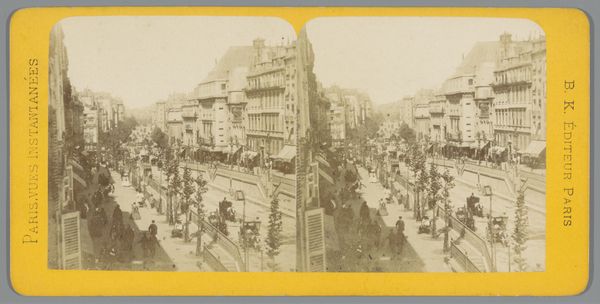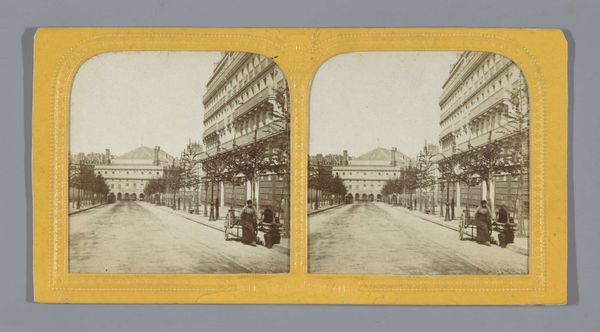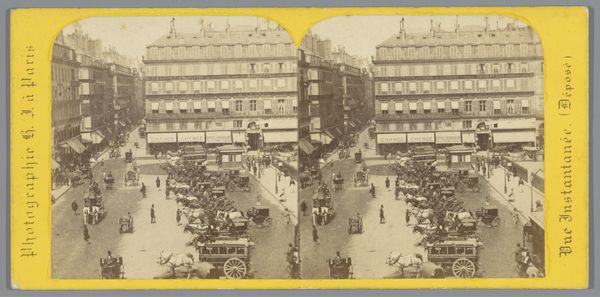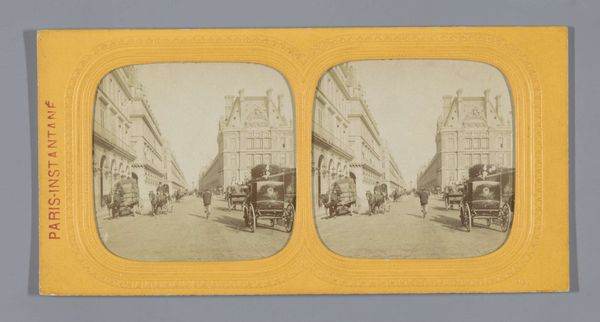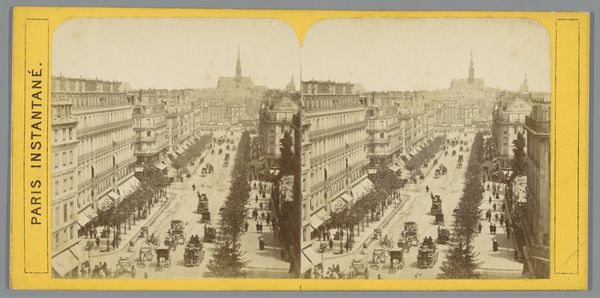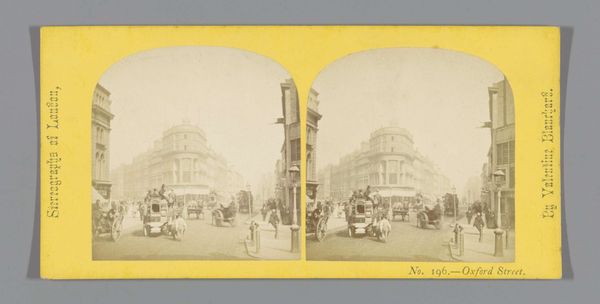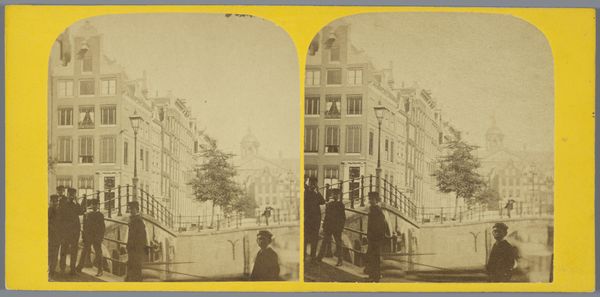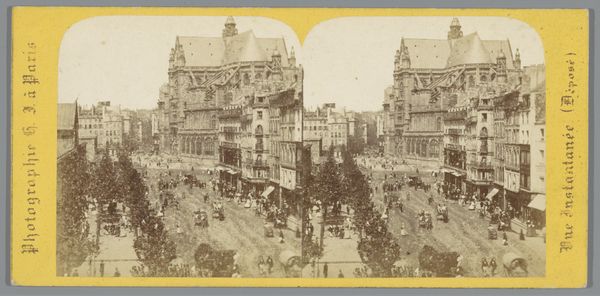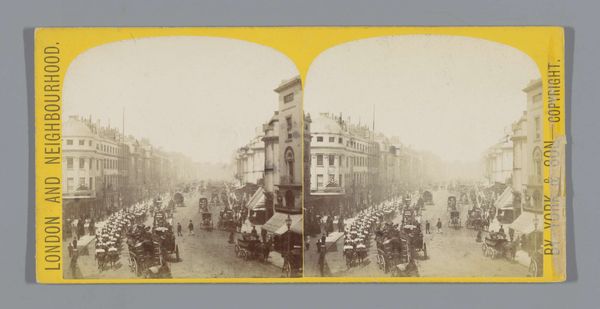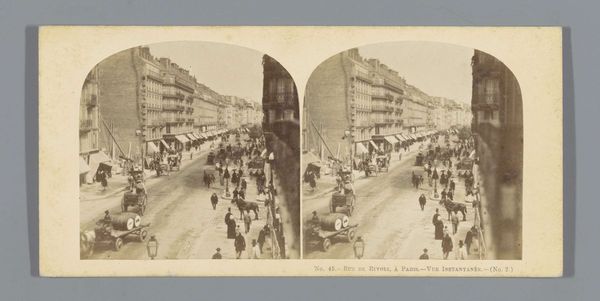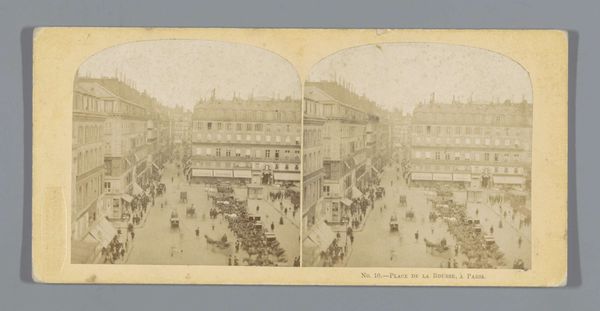
daguerreotype, photography
#
aged paper
#
toned paper
#
reduced colour palette
#
photo restoration
#
daguerreotype
#
photography
#
cityscape
#
street
#
realism
Dimensions: height 86 mm, width 173 mm
Copyright: Rijks Museum: Open Domain
Editor: So, here we have Jules Marinier's daguerreotype, *View of the Rue de Rivoli in Paris*, likely taken between 1850 and 1880. It’s striking how the image captures the hustle and bustle of city life, even in its sepia tones. It almost feels like a staged performance with those grand buildings serving as theater backdrop, but also incredibly busy. How do you see this cityscape interacting with the public, considering the historical context? Curator: It’s crucial to see this image not just as a snapshot of a street, but as a document embedded within the social and political project of urban development in Paris. Think about Haussmann's renovations that transformed Paris in the mid-19th century. This image potentially captures that moment, where old Paris confronts new Paris. How do you see the architecture playing a role here? Editor: The uniform facades definitely give a sense of order and control, which I guess is part of the Haussmann plan's goal of creating a more "modern" and manageable city. Does the photography itself—the medium—have a role in promoting this image of modernity? Curator: Absolutely! Photography, at that time, was revolutionary. It allowed for the "objective" recording of reality, but even that objectivity was curated, selected, and framed. Consider that the development of photography runs almost parallel with urbanization. What sort of statement do you think Marinier is making by choosing this perspective? Editor: It makes me think about access and viewership, like who was meant to see this. Was it intended as a kind of advertisement for the 'new' Paris, or for something else entirely? Curator: Precisely! It invites us to consider the social implications of visibility itself. Urban renewal often carries displacement with it; so whose Paris is this, really? Food for thought about public perception then and now, don't you think? Editor: Absolutely! I had never considered how urban development becomes part of the performance within the image itself! Curator: Seeing art through the lens of social forces allows us to unravel these intricate layers. There are many views of Paris, but they do not show the full picture.
Comments
No comments
Be the first to comment and join the conversation on the ultimate creative platform.
